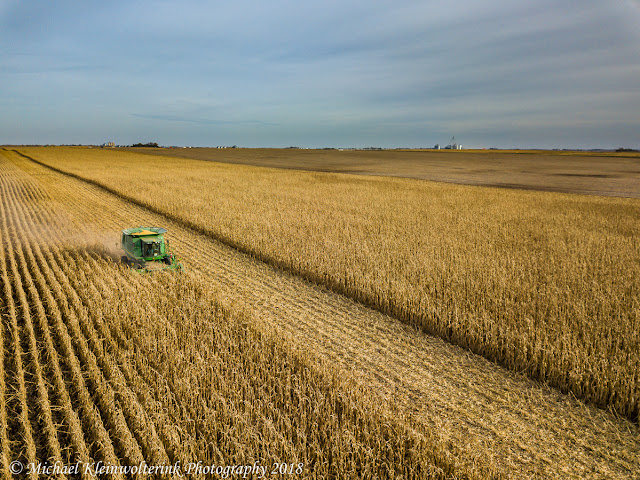Equipment Used: DJI Mavic Pro, Apple iPad, Samsung Galaxy S7
Edge, Lightroom & Photoshop CC
After renting a drone this summer, I ended up purchasing one this fall
and decided to go with a used DJI Mavic Pro with the future plans of upgrading
to a Mavic Pro 2 in a couple years. The aerial perspective of the landscape is
exciting to capture and I took the opportunity during this fall’s harvest to
capture our combine rolling through the fields.
I used a Galaxy S7 Edge or Apple iPad to control the drone with
automatic exposure for the camera settings. I shot in RAW to be able to use
Lightroom and Photoshop on the drones files. Getting the drone into position
was a learning curve since the combine was always moving so I had to predict
the composure of the scene while both the combine and drone were moving. I
tried to stay out in front of the
combine, compose the scene and wait to click the shutter button on the
controller when I liked the look of the image on the screen.
To edit the drones RAW files, I used Lightroom and created a preset of
adjustments to increase the contrast, saturation and vibrancy of the corn
field, sky and farm equipment. Sharpening and noise reduction were applied as
well. In Photoshop, I straightened and cropped these images to finish them. I
did two black and white edits on certain parts of the two images as well using
layer masks and brush tools.
Not crashing the drone into the combine or getting it ran over was a
success while being out in the field buzzing around with the Mavic Pro. Looking forward to more photography with the
drone.
#1.
#2.
#3.
#4.
#5.
#6.
#7.
#8.
#9
#10.
#11.
#12.
#13.
#14.
#15.
#16.
#17.
#18.
#19.




















































